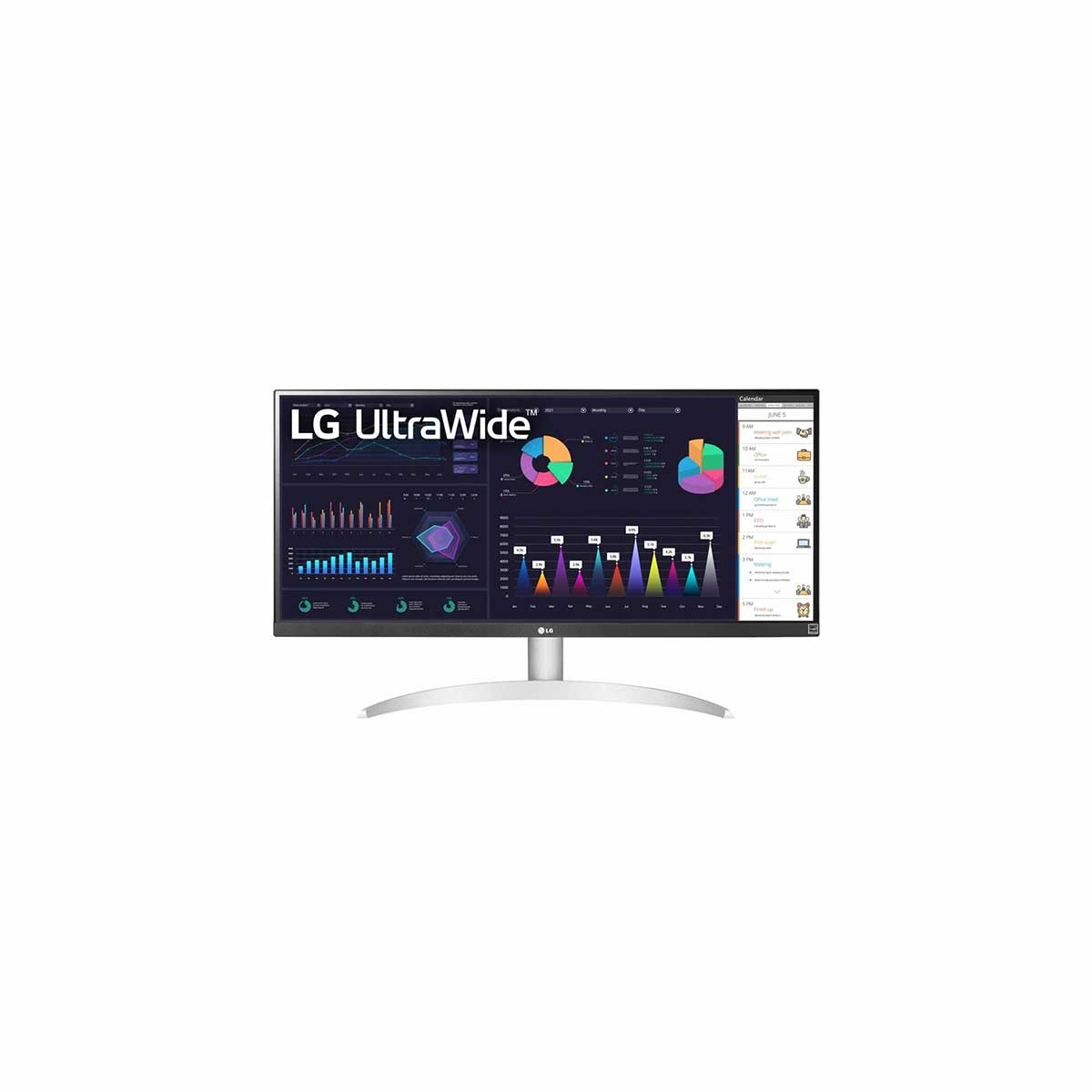LG 29WQ600 Image Quality
LG's 29WQ600 monitor features 178° wide viewing angles and consistent colors covering the entire sRGB color space, thanks to its IPS panel.
The standard color space for Windows applications is sRGB, even though there are displays with a wider gamut offering more vibrant colors at this price range. SDR content won't be over-saturated - in fact, it will be closer to the creator's intent.
It is suitable for entry-level color-critical work, but if you are a professional colorist, you will need a display with more strict factory calibration or a colorimeter.
IPS monitors can also suffer from IPS glow, which is characterized by visible glowing around the corners. In a dark room with a high brightness setting, it's mostly noticeable when displaying dark content.
With a peak brightness of 250-nits, the LG 29WQ600 is able to get more than bright enough under normal lighting conditions for most users. Even at its highest brightness setting, the LG 29WQ600 might still be too dim for you if you're in an exceptionally well-lit room because it won't be able to reduce glare.
The 2560×1080 resolution results in a pixel density of 95.81 PPI (pixels per inch), which means you get a fair amount of screen real estate with decent text and detail clarity.
LG 29WQ600 performance
Compared to 60Hz and 75Hz displays, the LG 29WQ600 has a maximum refresh rate of 100Hz.
It's around 90FPS that fast-paced games start feeling smooth and responsive, so the difference between 75Hz and 100Hz is more noticeable than the difference between 100Hz and 144Hz.
Also, the LG 29WQ600 offers tear-free video playback at up to 100FPS thanks to its variable refresh rate (VRR). This device supports LFC (Low Framerate Compensation) with a VRR range of 40-100Hz. In order to avoid tearing at 39FPS, the refresh rate is multiplied by 78Hz.
VRR is supported over DisplayPort by NVIDIA cards without requiring official G-SYNC certification, while AMD FreeSync works over HDMI and DisplayPort.
Additionally, the LG 29WQ600 supports Motion Blur Reduction, which reduces perceived motion blur at the cost of picture brightness. A refresh rate of at least 75Hz is needed for it to work at the same time as VRR.
There's no obvious ghosting behind fast-moving objects due to the specified pixel response time speed of 5ms (GtG).
Four response time overdrive modes are available: Off, Normal, Fast and Ultrafast.. Faster is recommended as it does not introduce 'Fast' hosting.
There is an integrated low-blue light filter (the 'Reader' mode) and the monitor's backlight does not flicker (unless MBR is enabled).







